Bellotto: The Königstein Views Reunited – National Gallery, London
A review of a free exhibition on now at the National Gallery. Bellotto: The Königstein Views Reunited is a good opportunity to see how this celebrated Venetian artist approached an unusual German commission.
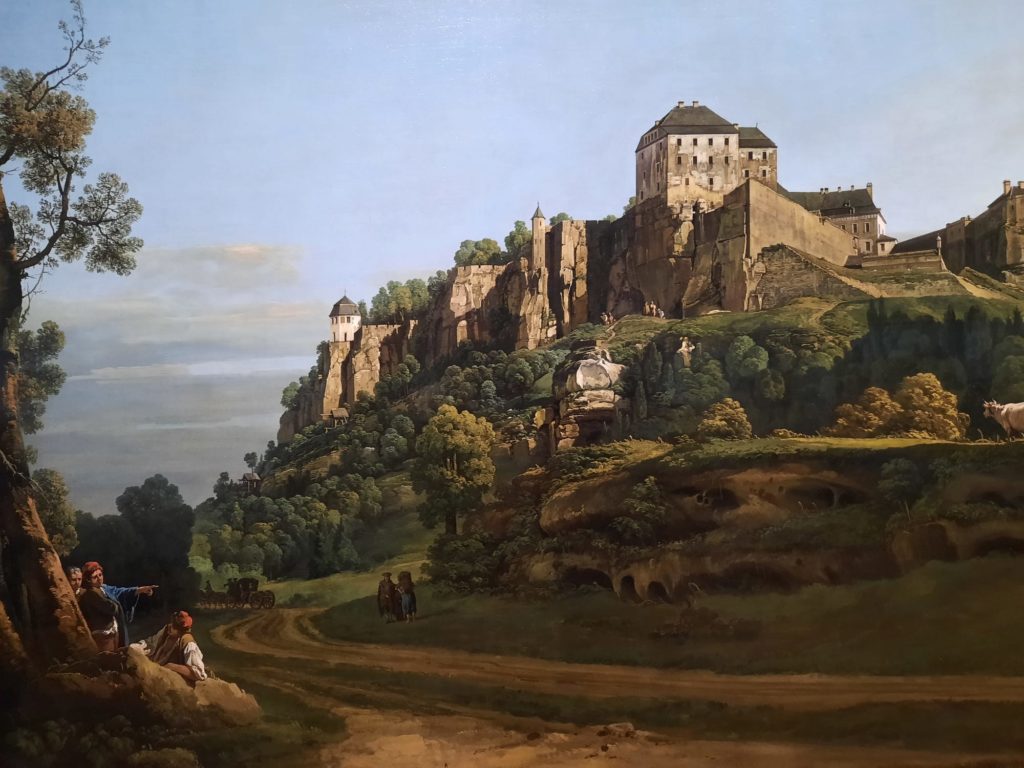
Bellotto’s Königstein Views
I am really getting into these one-room exhibitions at the National Gallery in London. Last year I saw Sin, which juxtaposed classic and contemporary art. And earlier this year I immersed myself in Jan Gossaert’s Adoration before learning about Polish artist Jan Matejko. The thing I like about them is that with just one room, I can give myself permission to slow down. I can take in the details. I can consider the art in front of me rather than racing ahead to make sure I fit everything in. It’s very relaxing.
So I very much enjoyed seeing Bellotto: The Königstein Views Reunited. This exhibition does what it says on the tin. Bellotto, nephew of Canaletto, was also a very talented landscape painter. He painted views of Venice like his uncle. And, also like his uncle, he travelled. During his career he went to Rome, Dresden, Vienna, Munich, and spent 16 years in Warsaw. It was during this latter stint that he painted the Königstein views. The European borders of the time are not our borders today, so August III was Elector of Saxony and King of Poland. He commissioned Bellotto to paint 30 views of Dresden and its surroundings. Today, the paintings serve as a record of many buildings lost in WWII bombings.
Bellotto’s views of Königstein never made it to his patron. The Seven Years’ War intervened, and the paintings first travelled to Britain before being dispersed. The National Gallery acquired one of the five views of Königstein in 2017, so has used this as an occasion to reunite it with the rest of the group for the first time in 250 years. Seeing the different views and treatments of the same castle side by side gave me an appreciation for each that I wouldn’t have had if I saw them separately. They stand as a wonderful record of an artist’s process and approach as well as of the fortress itself.
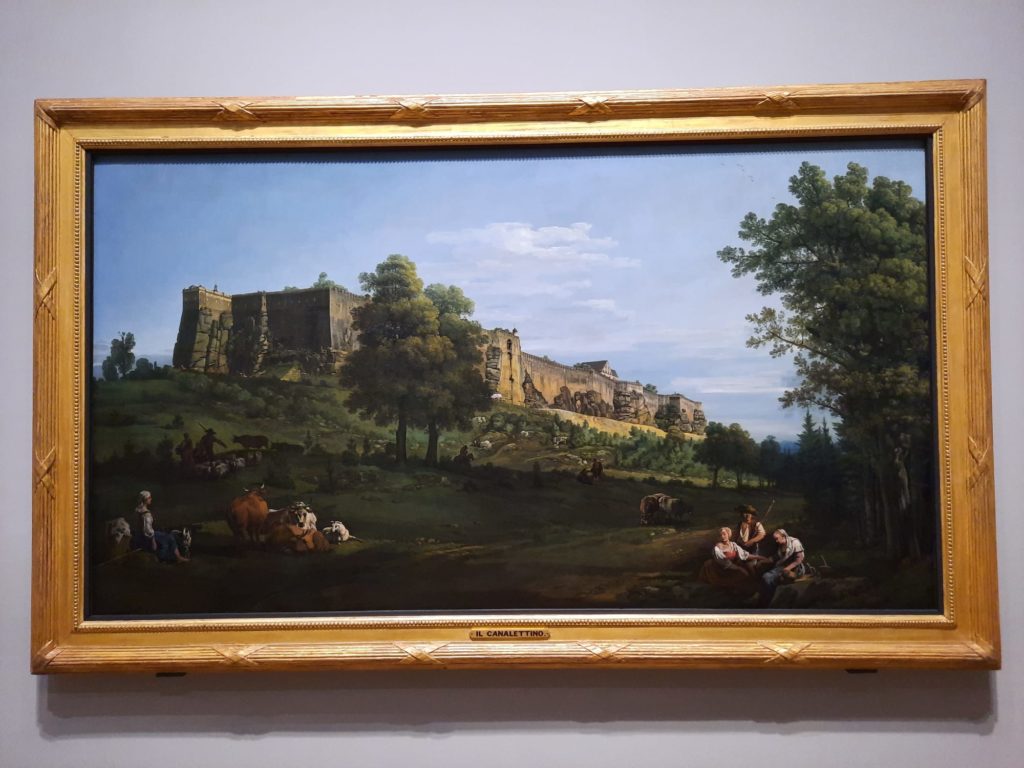
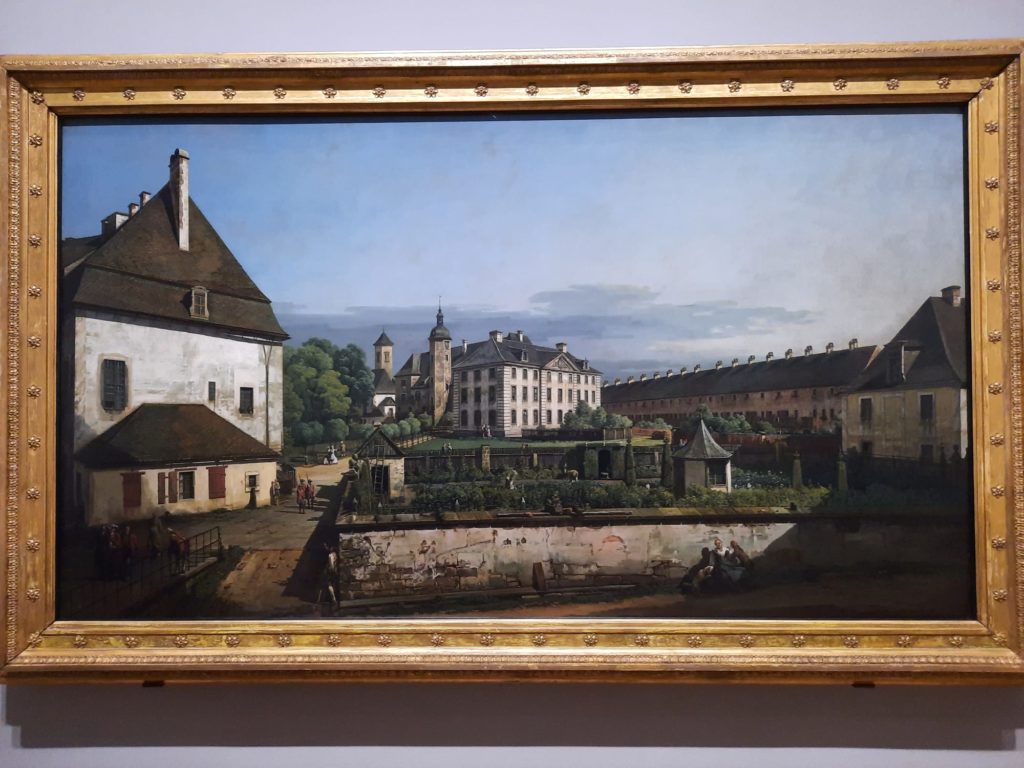
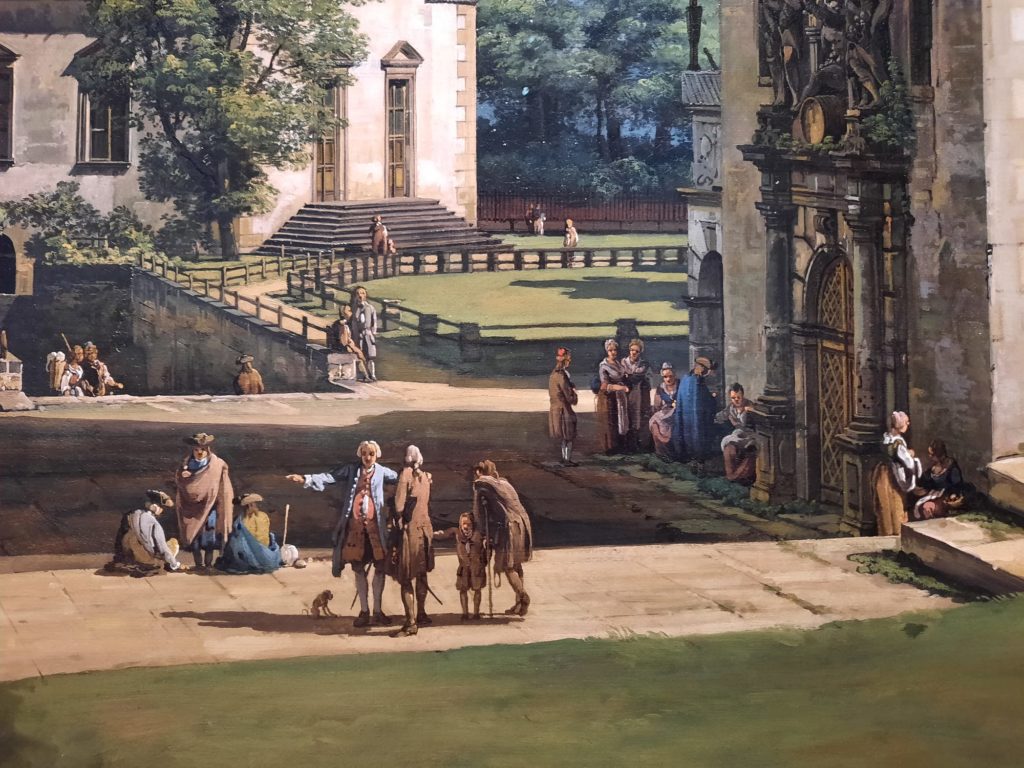
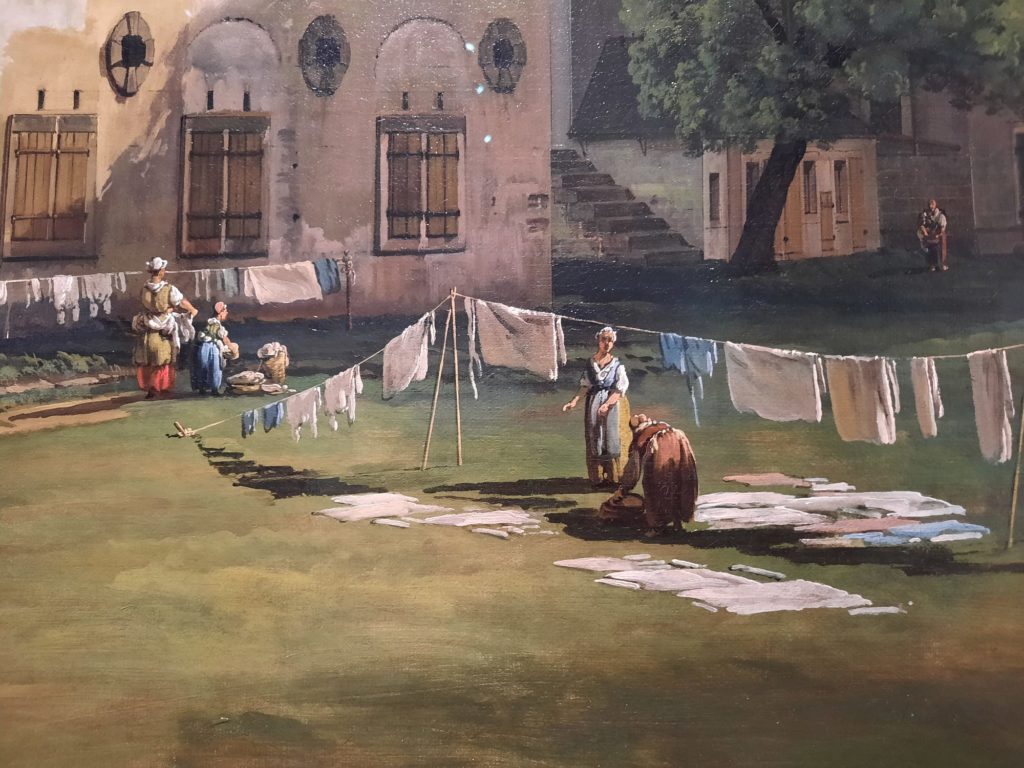
What Does This Exhibition Tell Us?
As well as just appreciating Bellotto’s mastery of light and architectural detail, I enjoy exhibitions like this for what they tell me about the life history of the paintings as objects. This takes me back to my student days, when I studied in Amsterdam under Peter van Mensch. His model “the object as data carrier” considers [museum] objects in terms of their structural identity (what is it? What is it made of?), functional identity (what is it for?) and contextual identity (what meanings have been assigned to it?).
So what does that have to do with Bellotto? Well, it means that, with most exhibitions I go to, I am looking at each artwork on at least two levels. Firstly looking at it for its aesthetic qualities. But also checking out which institution it’s come from, how it is conserved and framed; what does the object tell me about its history? And this exhibition was very interesting from that perspective. The five paintings live today at the National Gallery, Manchester Art Gallery, National Gallery of Art in Washington D.C., and a private collection. Interestingly the one from Washington is unglazed, so was the sole painting behind a protective rope. Generally you can also find out about provenance and acquisition from the labels. The backs of paintings are another great source of information when you can see them.
Call me an art nerd, but I find the information attached to artworks as objects to be fascinating. In this case, I liked the story of five paintings commissioned together, who did not reach their intended owner due to the vagaries of history, and instead have spread across England and the US. There, different conservation and collection frameworks have led to different ways of displaying the paintings. It’s only by slowing down and really looking, reading labels and understanding the information each painting is trying to tell me that I can gain these insights. So I remain grateful to the National Gallery for their interesting single room exhibitions!
Salterton Arts Review’s rating: 3.5/5
Bellotto: The Königstein Views Reunited on until 31 October 2021
[
If you see this after your page is loaded completely, leafletJS files are missing.

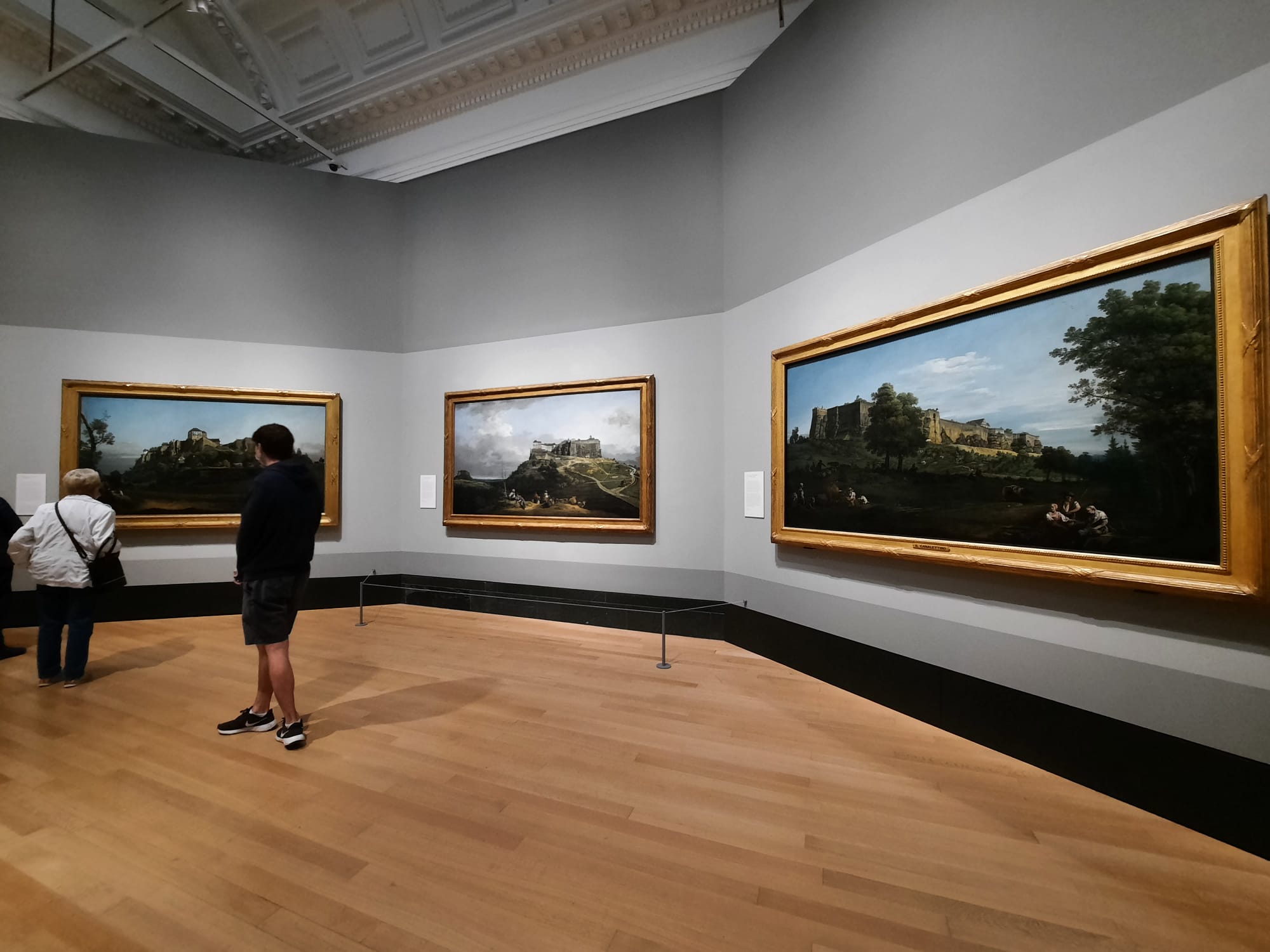
How fascinating. I love the idea of the set and their fate to be separated for 250 years! What a privilege to see them together – those who was that for the first time are long gone. I also like the framework of seeing a peice of art as a document – which always make me marvel that very ancient art isn’t more valued. Anyway – thank-you for the insight!
Yes it’s one of my favourite things with historic exhibitions – not just looking at the art, but checking where it’s come from, whose hands has it passed through, has it had a hard life or an easy life? The approach is contagious too, I’ve taught David to check where the loans come from when he’s at an exhibition!